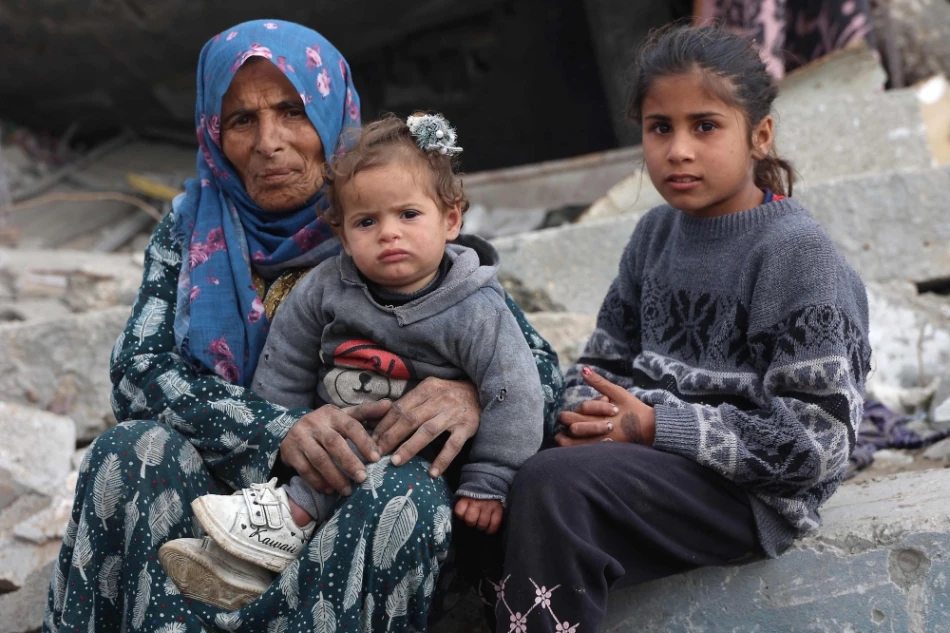
Israel Accused of Enforcing Systematic Starvation Policy in Gaza by Global Crisis Management Group
Gaza on Brink of Total Famine as Systematic Starvation Policy Takes Deadly Toll
The International Crisis Group has issued a stark warning that Gaza's 2.1 million residents face imminent famine following what the Brussels-based organization describes as Israel's systematic starvation policy implemented since the collapse of ceasefire negotiations in March. With over 1,000 Palestinians killed while attempting to reach food distribution sites since May, the humanitarian crisis has evolved from a war emergency into what experts warn could become a self-reinforcing catastrophe.
The Mechanics of "Controlled Starvation"
The Crisis Group's analysis reveals a deliberate strategy of "controlled starvation" designed to keep Gaza's population on the edge of famine without allowing complete collapse. This approach, however, has proven catastrophically miscalculated given the population's existing vulnerability after months of conflict and deprivation.
The policy operates through severe restrictions on humanitarian aid and commercial supplies, creating what aid workers describe as a daily battle for survival. The situation represents a significant escalation from previous blockade policies, moving beyond economic pressure to what international observers characterize as weaponizing basic human needs.
Failed Distribution System Amplifies Crisis
The Gaza Humanitarian Foundation Experiment
Israel's introduction of the Gaza Humanitarian Foundation (GHF) in May has proven to be a spectacular failure, according to the Crisis Group's assessment. Rather than working with established UN agencies that possess the infrastructure and expertise for large-scale humanitarian operations, Israeli authorities opted for a system using security contractors and chaotic distribution methods lacking transparency.
The claimed distribution of 87 million "meals" lacks proper documentation and clear definition, falling far short of meeting minimum population needs. More critically, this approach systematically excludes the most vulnerable populations while creating opportunities for violence and exploitation.
Deadly Consequences of Distribution Chaos
The human cost of this failed system is staggering. More than 1,000 Palestinians have been killed since May while attempting to reach distribution sites, which are often located far from population centers and heavily guarded. Israeli forces have repeatedly opened fire on crowds seeking food, transforming humanitarian aid into a life-threatening endeavor.
Medical Evidence Points to Imminent Collapse
While Gaza has not yet crossed the technical threshold for famine classification under the Integrated Food Security Phase Classification (IPC), field reports from medical organizations paint a picture of imminent systemic collapse.
Doctors Without Borders reported treating three times as many cases of acute malnutrition in the first two weeks of July compared to the entire month of May. Gaza hospitals are now recording 10-15 starvation deaths daily, a figure that exceeds average death rates throughout the war period.
Children Bear the Heaviest Burden
UN nutritional surveys conducted in July revealed that more than 16% of Gaza's children suffer from acute malnutrition—a rate that exceeds the famine declaration threshold and represents a four-fold increase since February. This statistic alone suggests that famine conditions already exist for the most vulnerable populations, even if not yet officially declared.
International Response and Diplomatic Cover
The Crisis Group's report directly challenges the international community's continued provision of diplomatic cover for these policies. The organization argues that the absence of a ceasefire agreement does not justify systematic starvation, calling for immediate opening of all crossings alongside comprehensive ceasefire negotiations.
This position reflects growing frustration among humanitarian organizations with what they perceive as international inaction in the face of preventable mass casualties. The report's language—demanding that "the death machine must stop, not merely slow down"—represents unusually direct criticism from a typically diplomatic organization.
Historical Context and Precedent
The systematic use of starvation as a policy tool in Gaza represents an escalation beyond previous blockade strategies employed since 2007. While economic restrictions and limited goods movement characterized earlier periods, the current approach directly targets basic caloric needs of the entire population.
International humanitarian law experts note that such comprehensive food restrictions affecting civilian populations constitute a clear violation of Geneva Convention protections, regardless of the broader conflict context.
The Self-Reinforcing Catastrophe Ahead
The Crisis Group warns that once famine begins, it will follow a catastrophic self-reinforcing pattern where general weakness accelerates death rates, particularly among children. This phenomenon, observed in previous humanitarian disasters, makes immediate intervention critical to prevent exponential casualty increases.
The organization's assessment suggests that Gaza may already be entering this dangerous phase, with malnutrition rates among children indicating that famine conditions exist even without official declaration. The gap between technical classifications and ground reality highlights the limitations of international monitoring systems in active conflict zones.
With daily starvation deaths mounting and distribution systems proving both deadly and inadequate, the window for preventing mass casualties is rapidly closing. The Crisis Group's analysis suggests that without immediate policy changes, Gaza faces not just humanitarian crisis but potential demographic catastrophe affecting an entire generation of Palestinian children.
 Sara Khaled
Sara Khaled







